
The project profile series of Blender 3D Architect is a collection of articles aiming for feature projects related to architectural visualization. We invite talented artists to share additional details about each project to demonstrate how they approach each stage. And also allow each author to publicize their work among our readers.
How does it work? It is like an interview, where we sent a couple of questions about a project for the artist.
If you want to check previous project profiles, visit this link.
Today we have a project named Interactive Apartment from digital artist Leandro Júnior, which used Blender and the Unreal Engine to create an interactive walkthrough for an interior design project.
What is unique about this project?
The project is an interesting report on an artist's migration process that has an extensive portfolio with traditional renders and was trying to migrate to interactive presentations. You can follow the artist's comments and notes on matters such as modeling, lights, and render performance for this project.
In the end, it is another great example of how Blender can work with the Unreal Engine to make interactive visualizations for architecture.
Let me thank Leandro Júnior, for sharing the details about the project with Blender 3D Architect readers.
Was it a commercial project? What can you tell us about the motivation for this project?
No, it was a personal project. It was my first project done in the Unreal Engine, and I wanted to add it to my portfolio. I used a project from a friend architect located in the city of Varginha, in Brazil.
Did you use any references for modeling, like technical drawings?
Yes, the project is based on a real apartment, so I modeled the apartment based on the architect’s technical drawings.
Did you model everything in the project, including furniture and props?
Not everything, but a lot. The civil construction was all modeled by me in Blender. I also modeled some props. But some of them came from third-party libraries.
What can you tell us about the interior design (Layouts, materials, and props)? Did you have to create it yourself?
Yes, I had. Some of the assets I decided to use were created for offline renderers, so import them into the real-time Unreal Engine required some extra work. Like I said before, some furniture I create myself from scratch, but some were already made assets. But for those, I used Blender to make the Retopology and the UV Unwrapping since importing them in their original state would create many problems in UE4. The materials had to be worked on, but it was nothing very complex, just simples PBR materials created in UE4 with some minor adjustments.
How long did it take from start to finish?
It took a long time, I guess, around 2 to 3 months. But it took all this time because it was my first project in Unreal Engine 4, and I was learning from scratch along with the production. The Blender parts (like the modeling, retopology, and unwrapping) were very fast because I already had experience in it. But the UE4 part, especially the Blueprints part (for the interactions), took the most time. But now that I already learned and created my first project, the next ones will be way quicker.
What hardware did you use to render? Can you share some render times?
My computer uses a Ryzen 7 2700, 48gb of RAM, and an RX 5700xt. During the process, I baked the lighting several times for testing purposes. Each bake took around 5 hours to complete in my processor. Unfortunately, my AMD graphics card can’t be used for the GPU Lightmass. So if anyone is interested in starting with UE4 archviz, I strongly recommend an Nvidia graphics card.
Can you share any details about the lighting process?
Since I wanted to extract the most performance from it, and I did not intend to have movable objects inside the project, I went for full baked lights. In Unreal Engine, you have 03 options: Movable, Stationary, and Baked. Stationary light is a mix of baked lights with real- time shadows from the movable lights. But as my project was purely static, I went for the only baked lighting. Not only is it more performant on execution time, but it’s also more realistic since it calculates all the bouncing rays. The downside is, obviously, the big baking times I had to wait. Again, since I have an AMD graphics card, I couldn’t use any RTX effect, but a new RTX graphics card is my wishlist right now.
Did you use any Add-ons or external tools to create the project?
Yes, mostly in Blender. By far, the most important Add-on I used to develop this project was Texel Density Checker. I wanted to have a consistent texel density across all my props and models, so I used this Add-on in all models to achieve this consistency. I tested some solutions for retopology, too, with different results. Another Add-on was the Send To Unreal, which facilitates the process of sending Blender models to Unreal Engine.
What would you say was the most challenging aspect of working on this project?
Since I was learning Unreal Engine and the process, I would say that learning Blueprint (the visual scripting system the UE uses) was the hardest part. But thinking on the artistic side, I guess balancing quality/performance in all the props was hard too.
If you want to share any additional details about the project, feel free to send it!
I made this project for my studio portfolio: Gecko3D. Since traditional 3D renders are common in my country, I wanted to learn a new skill to offer to my potential clients. So this project was the first attempt. Right now, I’m already working on a new project to develop even further my skills.
Thanks again to Leandro Júnior for sharing details about their work. You can check more projects from him at Gecko3D and also Behance.

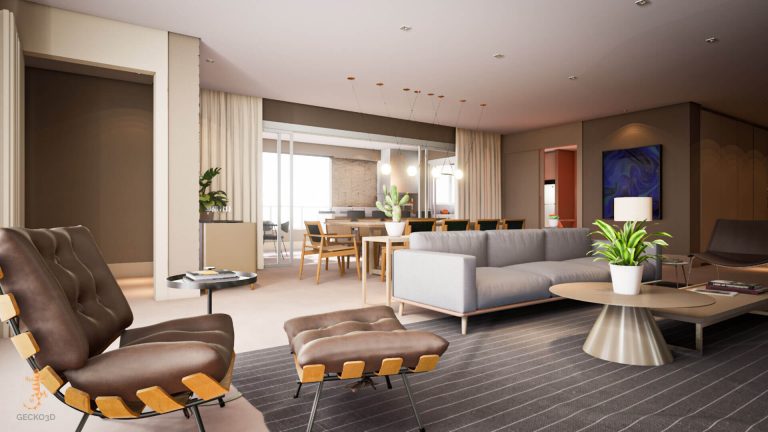
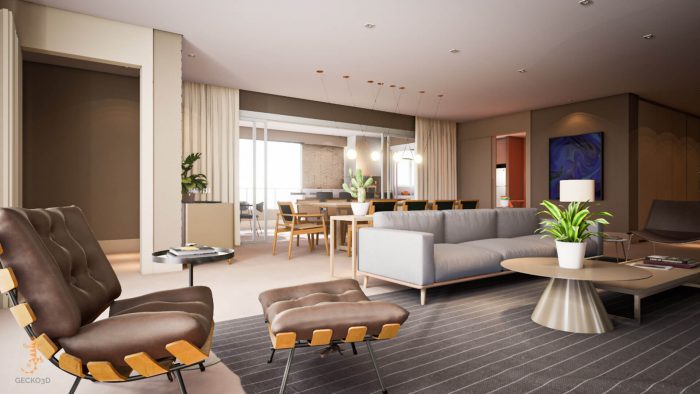
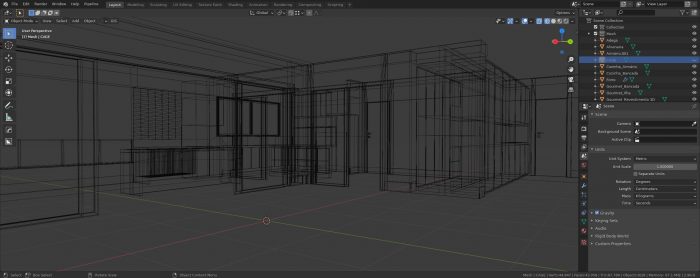
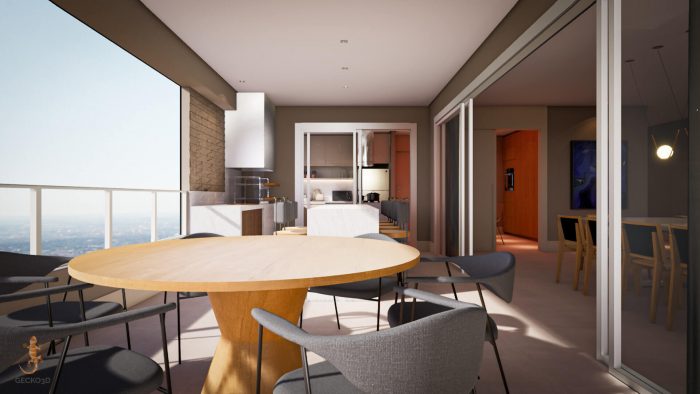
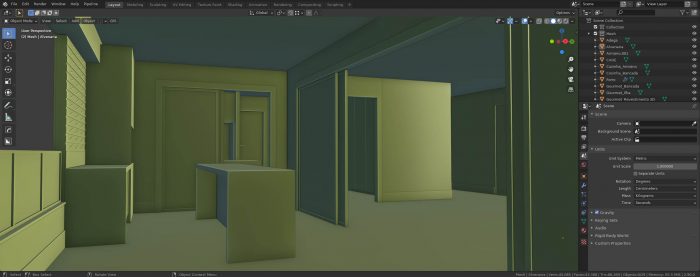
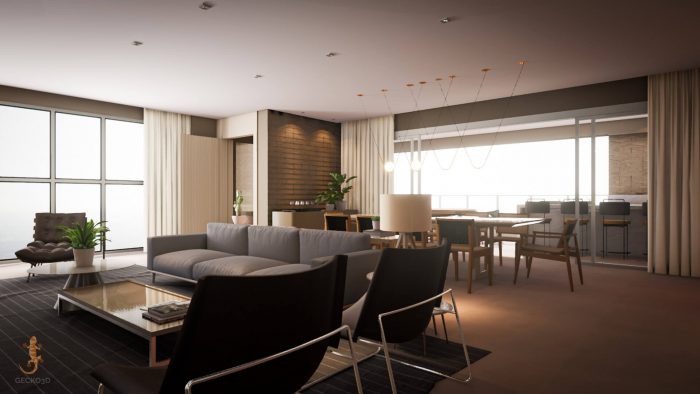
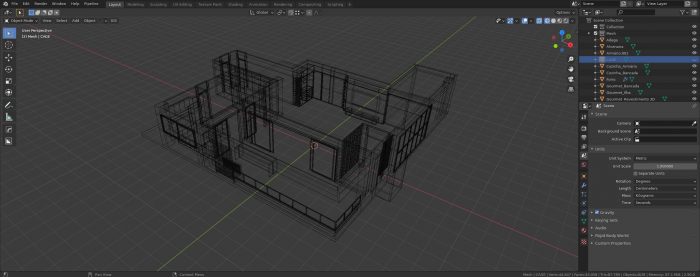
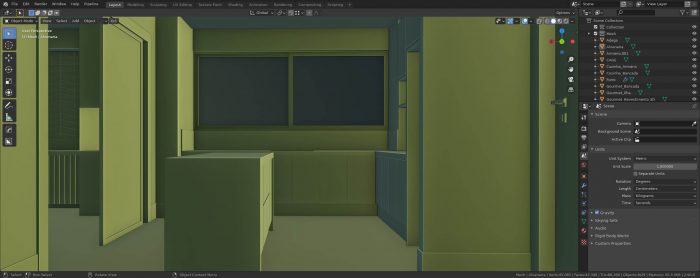
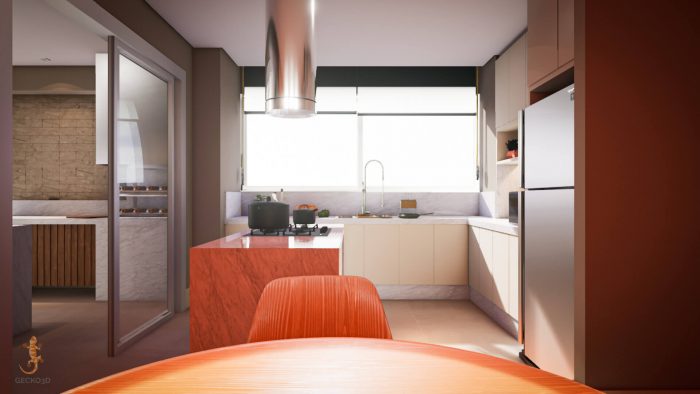
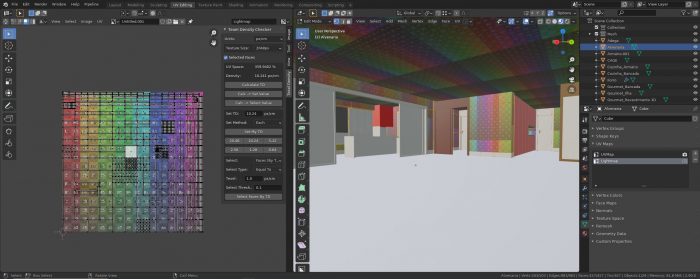
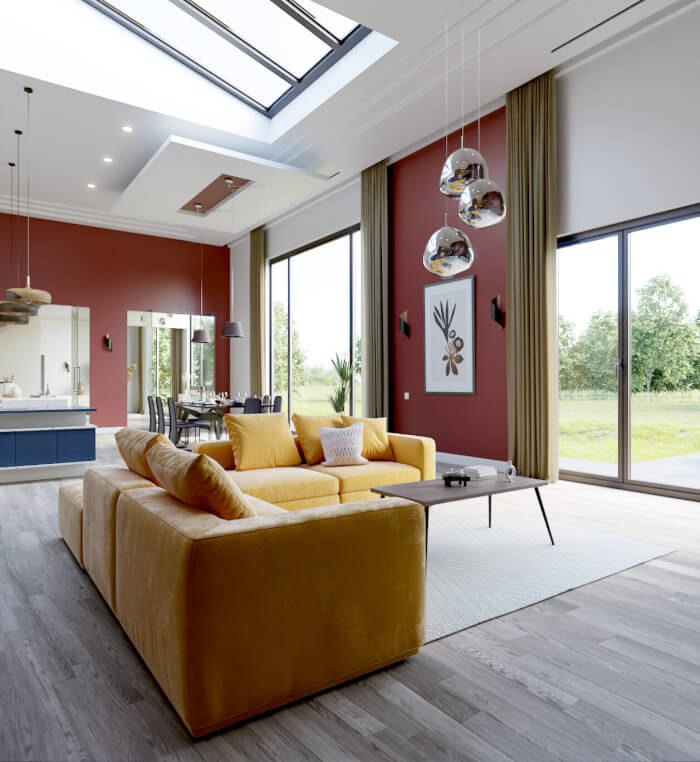
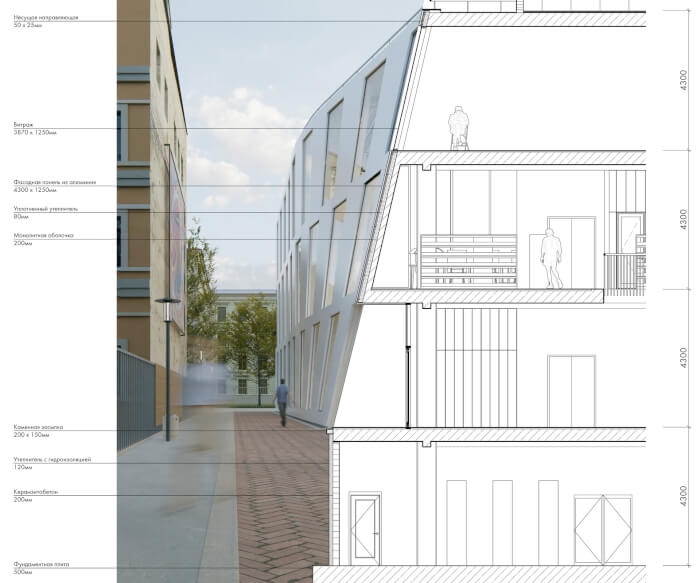
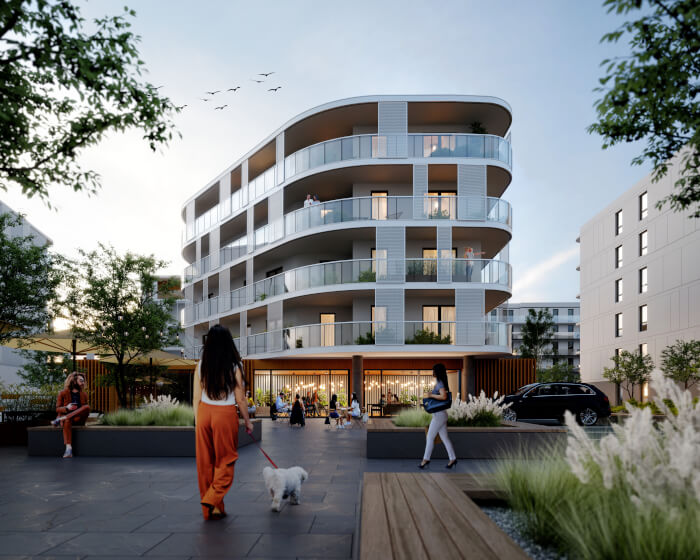

It’s an amazing experience to walk around your future house and this artist made such an exquisite job!
This is awesome! But if I was to hire your studio to make me a interactive visualization, would I need a powerful CPU/GPU to run the project? I mean, this is a perfect way for clients to see the project before it’s done, but I don’t think most of them would have great hardware available.
Amazing job, great work, nice guy.
Yes, you need at least a mid-grade GPU no run this project on your PC. But with that limitation in mind, i offer the possibility for the client to hire a third-party service in which he can stream the project from any device. So with a tablet, notebook, smartphone or any other device with a web browser and a 10mb internet connection, he can play the walkthrough .
Good to know! I’ll get in touch.